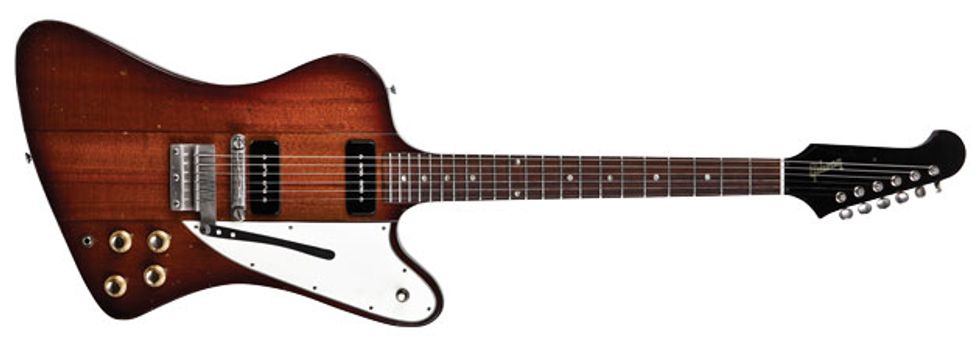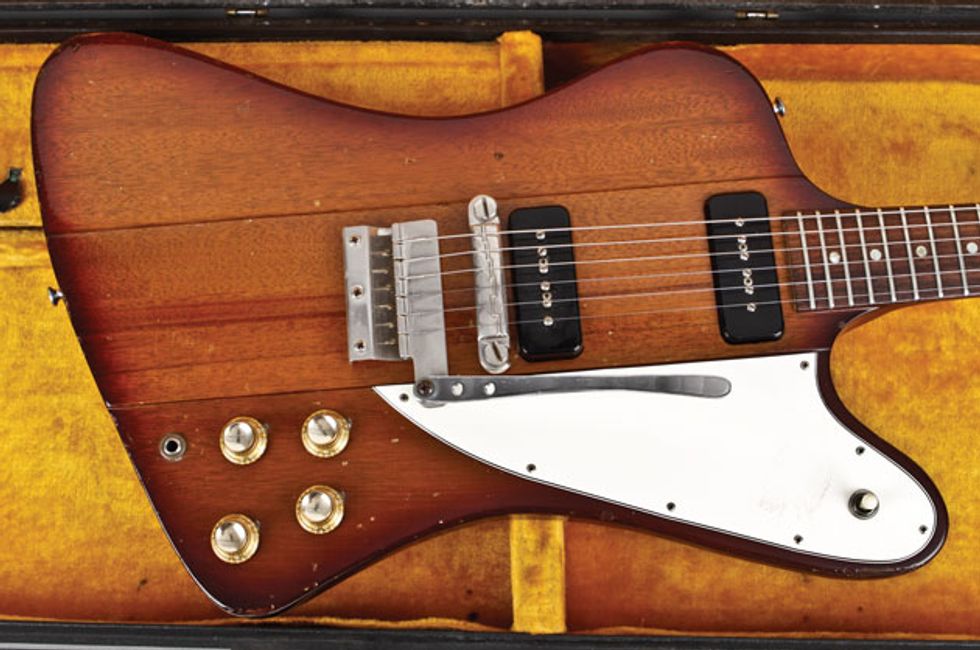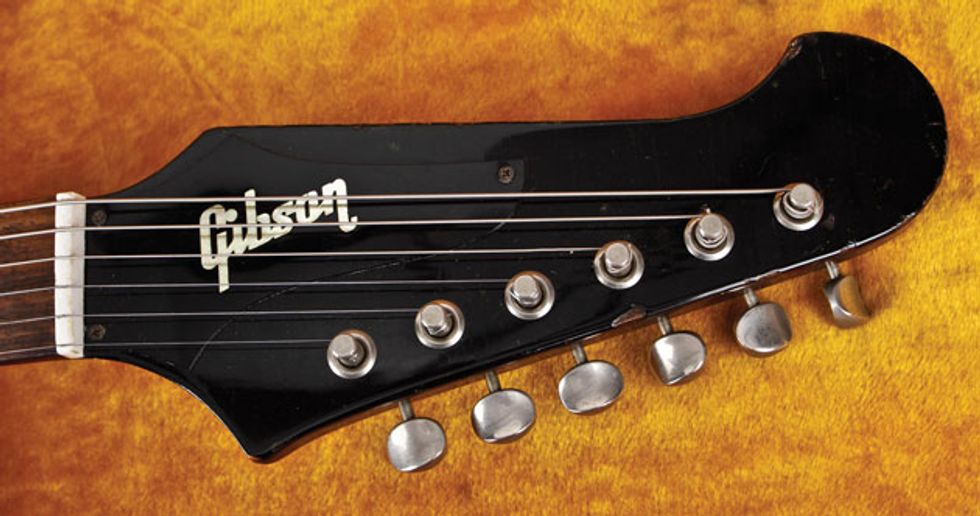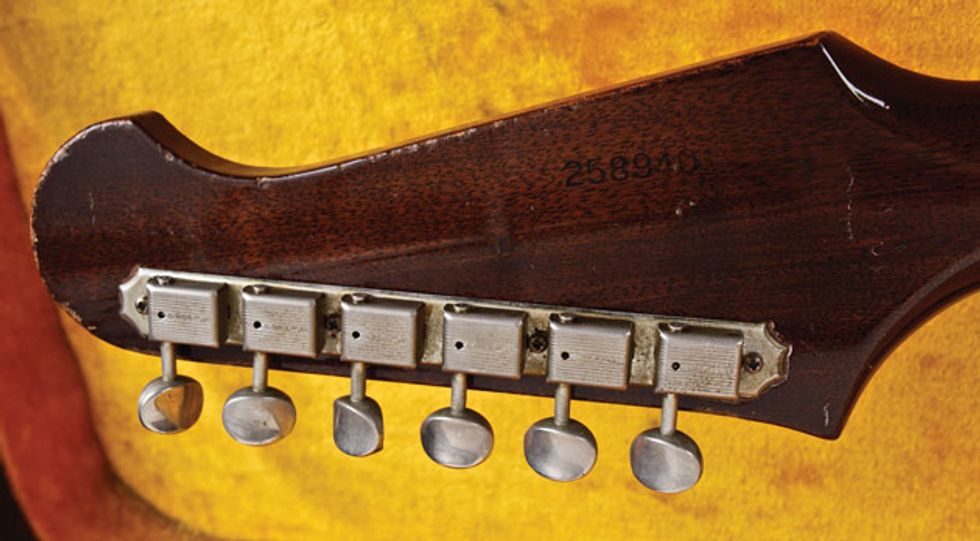In 1962 Gibson president Ted McCarty decided that a bold new guitar was needed to compete with Fender’s popular Jazzmaster. For a fresh, all-new concept, McCarty sought outside help and hired well-known automobile designer Ray Dietrich. After 50 years of designing for such top companies as Lincoln, Packard, Ford, and Chrysler, Dietrich had recently retired to Kalamazoo, Michigan, where Gibson was headquartered at the time.
Original Firebirds had neck-through-body construction with glued-on “wings.”
The new Firebird line—the name was suggested by Dietrich—was introduced in the spring of 1963. The series comprised four guitars, the Firebird I, III, IV, and VII, and two basses, the Thunderbird II and IV. Boasting a unique neck-through-body construction that ran from the tip of the headstock to the bottom strap button, as well as a pair of asymmetrical “wings” attached to either side of the neck’s center section, the guitar had a unique, irregular look. To complete this visual impression, the headstock sported six banjo tuners located on the opposite side of Fender’s familiar headstock.
The unusual construction of the Firebirds made them difficult and expensive to produce. Once the guitars had shipped, the headstock/neck area was found to be weak and easily broken. Unfortunately, the heavy banjo tuners exacerbated this problem.
This 1965 Firebird has a flat headstock, which differs from the two-level sculpted design introduced in 1963.
These issues, along with poor sales and pressure from Fender about copyright infringement on its “offset waist” design, caused Gibson to revamp the entire Firebird/Thunderbird line using more conventional and less costly construction methods. The overhauled versions used a traditional glued-in neck on a more conservative offset body that looked like a flipped over—non-reverse—edition of the earlier guitars.
Another difference between the ’63 Firebird and the redesigned ’65 model shown here:
Gibson replaced the banjo tuners with conventional Klusons.
The rare 1965 Firebird III pictured here has features of both the original reverse Firebirds and the redesigned non-reverse versions of that year. It retains the reverse body style and neck-through construction of the original series, yet has a flat headstock, rather than the earlier two-level sculpted style. It’s also equipped with conventional Kluson tuners instead of banjo tuners. The neck is unbound, like the non-reverse models, and P-90 pickups replace the original mini-humbuckers.
The original price for a Firebird III was $249.50. The current value for one in excellent all-original condition is $10,000.
Sources for this article include Gibson Electrics—The Classic Years by A.R. Duchossoir; Flying V, Explorer, Firebird by Tony Bacon; and Gibson Guitars: Ted McCarty’s Golden Era 1948-1966 by Gil Hembree.










![Rig Rundown: Russian Circles’ Mike Sullivan [2025]](https://www.premierguitar.com/media-library/youtube.jpg?id=62303631&width=1245&height=700&quality=70&coordinates=0%2C0%2C0%2C0)

















